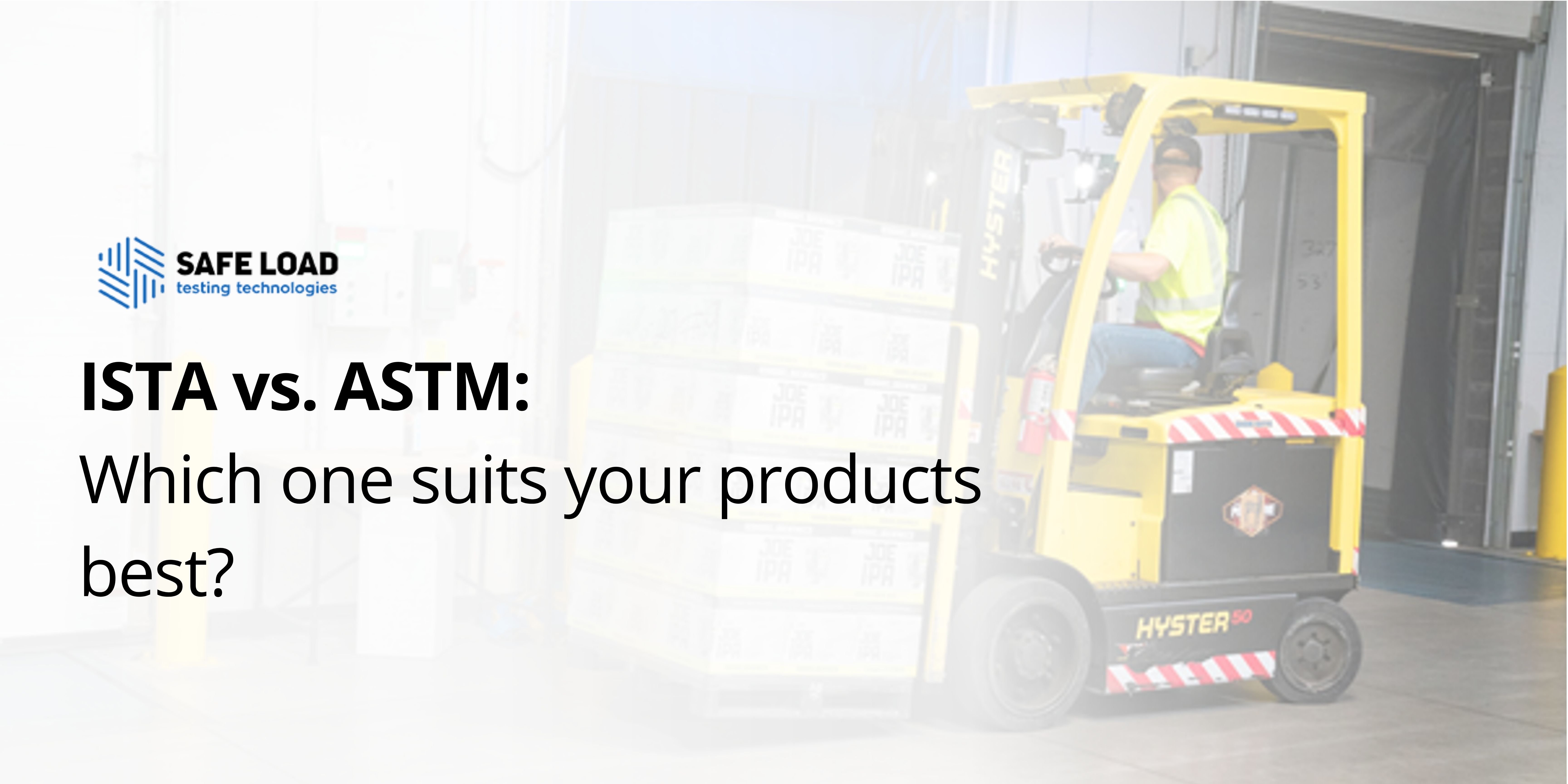Main shipping test standards:
Nowadays we are witnessing an ever-changing global goods distribution landscape.
A series of international organizations play a key role within this landscape, attempting to manage the safety of goods by establishing shipping testing standards.
Shipping test standards aim to offer references and guidelines to perform shipping test procedures.
- Complying with the standards established by these organizations allows companies to ensure that they abide by these standards and optimize their packaging to guarantee the safety of the load.
Thus, the regulations for transport testing seek to ensure that products can withstand the threats that will arise during the distribution cycle (vibrations, shocks, drops, or compression forces, among others) without suffering damage.
- These standards establish a series of tests for shipping performed using transportation simulation machines that test the ability of a package to protect the goods during the distribution cycle.
- The various standards clearly outline which shipping tests should be performed, and under which conditions, to meet the requirements.
Performing shipping tests by following the shipping test standards proposed by any of these organizations certifies that the packaging or package is fit to protect the load.
ISTA Testing for shipping
ISTA (International Safe Transit Association) provides testing protocols and design standards with sights on:
- Optimizing packages
- and guaranteeing that their contents are protected
In the face of the ever-changing risks of the global distribution environment.
ISTA was born in 1948 seeking how to avoid the enormous losses experienced during shipping in the porcelain sector It is one of the most important organizations worldwide in the field of shipping test standards and its objective is to minimize the damages caused to the products during transportation.
Through its regulations for transport testing, ISTA tries to promote the optimization of packaging so that it is effective in its function: the protection of goods.
The ISTA test series
ISTA standards are divided into 7 series:
The ISTA 1 series, Non-simulation Integrity Performance Tests
Involves the most basic shipping tests, which test the strength and robustness of the product + packaging system. This series includes the A, B, C, D, E, F, G, and H test procedures.
The ISTA 2 series, Partial Simulation Performance Tests
Involves the combination of the basic testing processes of ISTA 1 and certain processes of ISTA 3. This series includes testing procedures A, B, and C.
The ISTA 3 series, General Simulation Performance Tests
Comprises a series of advanced tests that offer laboratory simulations of the motions, forces, and conditions in transportation environments that may damage a load. Includes the A, B, E, F, H, and K procedures.
ISTA 4 serie Enhanced Simulation Performance Tests
It includes a general simulation with at least one specific simulation element (linked to the actual distribution to be carried out).
This series is carried out with different machines:
- Vertical vibration systems + Pitch & Roll
- The incline impact tester
- The vertical vibration system
- The compression tester
- The drop tester
- The horizontal impact tester
The ISTA 6 series, Member Performance Tests
It consists of a series of testing protocols created to comply the requirements of specific members of ISTA The series includes the following protocols:
- 6-AMAZON.COM-SIOC
- 6-AMAZON.COM-Over Boxing
- 6-FEDEX-A
- 6-FEDEX-B
- Project 6-SAMSCLUB
In order to comply with the 6-AMAZON.COM SIOC and Over Boxing protocols, Safe Load created innAmazon, a set of machines that aim to assist you in obtaining Amazon’s Frustration-Free Packaging certificate
The ISTA 7 series, Development Tests
It comprises a series of tests used in the development of packaging for transport and has the series D, E.






